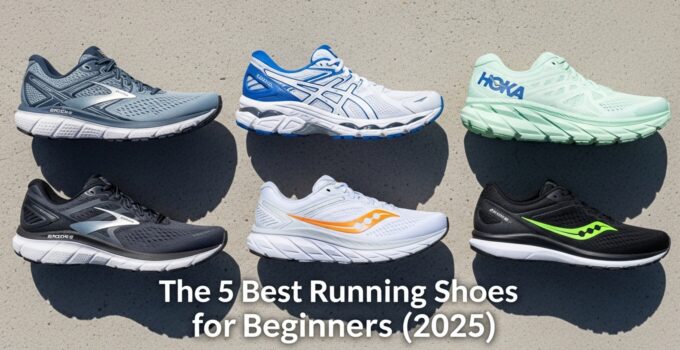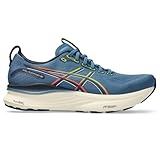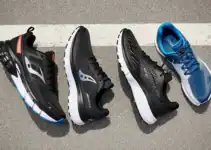If you’re reading this, chances are you decided to start running and now your body is screaming at you. Let’s be blunt: your shins are on fire, your knees ache, and every step on the pavement feels like a hammer blow. You want to start running, but it hurts, and you’re probably blaming your body. As someone who’s been around the running block, I’m telling you: stop blaming your knees. It’s your shoes.
You’re likely running in old sneakers, cross-trainers, or those 3-year-old “lawn mowing” shoes. They have zero, or “dead,” cushioning and no stability, which is the fastest ticket to a shin splint or stress fracture for a beginner.
Your first running shoe is actually the most critical piece of gear you’ll ever buy. You don’t need the $270 carbon-plated race car; you need a tool built for injury prevention and habit formation. Its success is measured not in speed, but in whether it’s comfortable and supportive enough to keep you coming back for more, pain-free.








Here are the safest, most comfortable, workhorse shoes (daily trainers) to get you started pain-free in 2025.
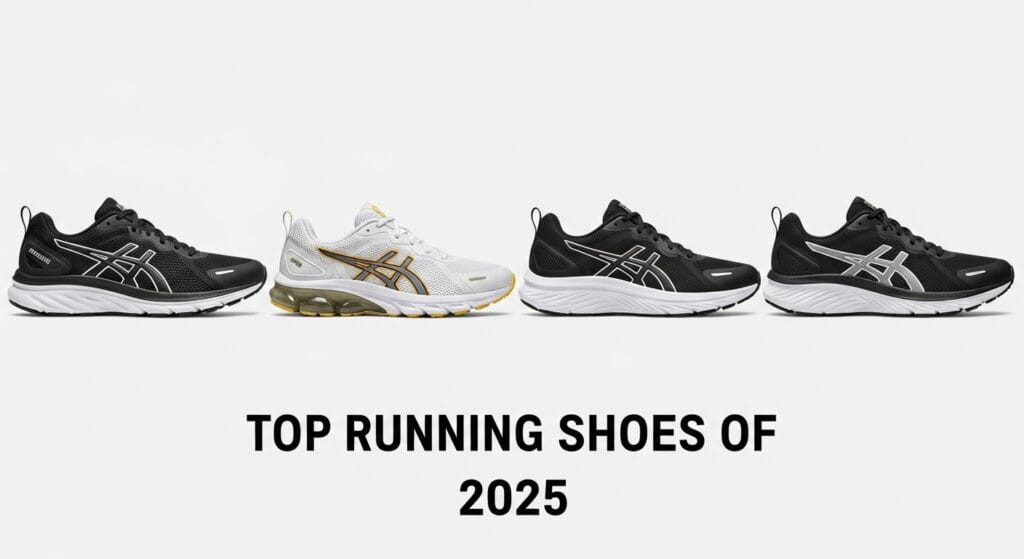
top running shoes for beginners
Quick Picks Table: Top 5 Safest Bets for New Runners (2025)
| Award | Shoe Model | Best For | Key Feature | Price Range |
|---|---|---|---|---|
| 🏆 Best Overall | Brooks Ghost 17 | The “Go-To” for Everyone | Balanced DNA Loft v3 Cushion, Reliable Fit | $$$ |
| 🛡️ Best for Stability | ASICS GEL-Kayano 32 | Overpronation (Flat Feet) | 4D Guidance System™, High Cushion | $$$$ |
| ☁️ Best Max Cushion | Hoka Clifton 10 | Maximum Softness, Joint Protection | Plush, Lightweight EVA Foam Stack | $$$ |
| ⚡ Best Responsive Feel | Saucony Ride 18 | A “Peppier” Neutral Run | Predictable & Dependable Daily Trainer | $$$ |
| 💰 Best Value / Gym Hybrid | Brooks Revel 6 | New Runners, Gym + Run | Sleek Design, Solid Cushioning | $$ |
Running Shoe 101: The Beginner’s No-BS Buyer’s Guide
3.1. The Only Shoe You Need: The “Daily Trainer”
The first mistake people make is thinking they need specialized shoes. For 90% of your runs right now—which should be easy, conversational-pace efforts—you only need a “daily trainer”. This is the workhorse shoe built for comfort, durability, and enough cushioning to protect you from the constant impact of the road. Save the super-light, non-durable racing shoes for when you’re much more experienced.
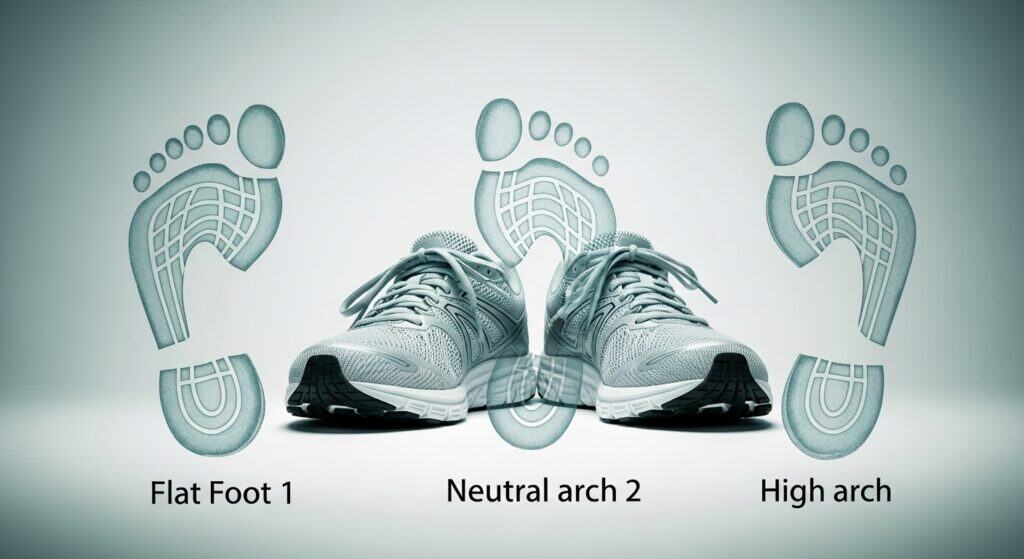
wet test
3.2. The Most Important Question: Do Your Ankles Roll In? (Pronation 101)
This is the most critical question for injury prevention. When you run, your foot naturally rolls inward (pronation) to absorb shock. The problem is when it rolls in too much (overpronation), which can lead to shin splints, plantar fasciitis, and knee pain because the arch collapses.
The easiest way to check this at home is the “Wet Test”:
- Get your foot wet.
- Step onto a dark piece of paper or cardboard.
- Look at the print:
- Normal Arch (Neutral): You see a clear curve. You need a Neutral shoe (like the Brooks Ghost or Hoka Clifton). Most runners are neutral.
- Flat Arch (Overpronation): You see almost your entire foot. Your ankle likely rolls in. You need a Stability shoe (like the ASICS GEL-Kayano).
If you’re unsure, the best advice—seriously, trust me on this—is to go to a specialty running store and get a free gait analysis. They watch you run on a treadmill and can tell you exactly what category of shoe is right for you.
3.3. Cushioning: Plush Pillow vs. Responsive Road-Feel
Cushioning is the engine of the shoe, dictating shock absorption.
- Plush/Max Cushion (e.g., Hoka Clifton): This foam feels soft, pillowy, and focuses heavily on absorbing impact. It’s fantastic for recovering legs or for heavier runners who need maximum protection.
- Balanced/Responsive (e.g., Brooks Ghost, Saucony Ride): This is the safe middle ground. It feels cushioned enough to protect your joints but firm enough to feel stable and connected to the road. This is generally the safest starting point for beginners.
3.4. Heel-to-Toe Drop (A Quick Intro)
The “drop” is simply the height difference in millimeters (mm) between the heel and the forefoot. This is important because it dictates how forces are distributed across your legs.
- High Drop (8–12mm): This is traditional (like the Ghost at 10mm). It encourages a heel-strike landing, which most new runners do naturally. This is generally the safest clinical recommendation for a beginner because it relieves stress on the calf and Achilles tendon.
- Low Drop (0–7mm): This promotes a midfoot or forefoot strike.
Guru Tip: Don’t overthink this, but don’t make a drastic change. Switching from a high-drop shoe to a low-drop or zero-drop shoe too quickly is the fastest way to get an Achilles tendon injury, as your calves and tendons aren’t conditioned for that strain yet. Stick to the 8–12mm range for your first pair.
3.5. The Sizing Rule: You MUST Buy Bigger
THE #1 MISTAKE: Buying your normal street shoe size.
Your feet swell significantly when you run, especially over distance or in heat. If you buy your normal size, your toes will slam into the front of the shoe, resulting in black toenails and blisters.
The Rule: Go up at least a half-size (1/2) from your normal shoe size. You should have a full thumb’s width of space between your longest toe and the end of the shoe. If it feels snug in the store, it will feel awful a mile into your run.

a new runner tying their shoes
Detailed Reviews of the 5 Best Beginner Running Shoes (2025)
If you’re unsure where to start, grab a daily trainer like the Brooks Ghost 17. If you know your ankles roll inward (overpronation) or you have flat feet, the ASICS GEL-Kayano 32 is your stability solution. And if comfort and wide feet are your main concerns, the Hoka Clifton 10 is a must-read.
🏆 1. Best Overall: Brooks Ghost 17
Honest Take: The Ghost is the industry standard and a reliable choice for beginners because it’s a non-flashy, dependable classic. It’s the quintessential workhorse shoe—it just works. The cushioning is perfectly balanced: soft enough to protect you, but firm enough to feel stable. The Ghost 17 now uses the nitrogen-infused DNA Loft v3 foam, giving it a bit of a fresh feel, but it remains consistent and reliable. It features a moderate 10mm drop, which is ideal for new runners who naturally land on their heel. It’s an excellent, durable, no-brainer first shoe.
🛡️ 2. Best for Stability: ASICS GEL-Kayano 32
Honest Take: If the “Wet Test” showed you have flat feet and your ankles roll inward, this is your shoe. The Kayano has been the industry standard for stability for decades. It ditches the old, rigid medial posts and now uses the modern 4D Guidance System™ that gently guides your foot into a neutral path without feeling clunky or intrusive. It’s plush and highly cushioned thanks to FF Blast Plus foam and a PureGEL insert in the heel. It provides excellent stability and comfort for runners who need that lateral support, ensuring knee and shin pain caused by overpronation is kept in check. It does tend to be a bit heavier, but that stability is worth it.
☁️ 3. Best Max Cushion: Hoka Clifton 10
The Honest Take: If running just plain hurts and you want the softest, most forgiving, leg-saving ride possible, the Hoka Clifton is your answer. It is famous for its “maximalist” stack of lightweight EVA foam, making it feel like running on pillows and dramatically reducing impact. The newest version, the Clifton 10, is a safer bet for beginners because Hoka increased the drop from 5mm to 8mm. This makes it far more accommodating for the average heel-striking novice. Despite the massive amount of cushioning, it manages to feel light and energetic, not clunky. It’s also praised for its accommodating fit and roomy toebox.
⚡ 4. Best Responsive Feel: Saucony Ride 18
The Honest Take: The Saucony Ride is a direct competitor to the Brooks Ghost, but often feels a little faster and more fun on the foot. It uses supportive cushioning that hits a sweet spot between comfort and support. Our testers noted that this is a dependable shoe that handles everything from casual jogs to race day readiness. The Ride 18 is excellent for new runners because it gets all the fundamentals right without forcing you to change your natural running pattern. It provides solid stability and full-foot comfort. At a relatively low retail cost for a good-quality trainer, this durable model is a phenomenal value.
💰 5. Best Value / Gym Hybrid: Brooks Revel 6
The Honest Take: Let’s be real, stepping into a new hobby with a $150–$165 shoe is a big commitment. The Revel 6 gives you the quality and durability of the Brooks brand at a much lower price point. The cushioning is simpler, but it’s still light, responsive, and totally sufficient for getting those first few miles in. Its sleek, simple design also means it looks great if you’re using it as a hybrid shoe for the gym, circuit training, or just walking. If you need one shoe to “do it all” as you start out, the Revel is a smart starter shoe.
How to Make Your Shoes Last (And When to Replace Them)
This is a piece of honest advice you need to hear: running shoes are a perishable tool.
The 300–500 Mile Rule (THIS IS CRITICAL)
The foam midsole is the first part of the shoe to die. It loses its ability to absorb shock and bounce back long before the outsole tread wears down or the upper looks messy. Running on “dead” shoes—even if they look fine—is the absolute number one cause of shin splints, stress fractures, and persistent knee/joint pain for runners.
- The general recommendation is to replace your running shoes every 300 to 500 miles.
- Track your mileage: Use a simple app or log your runs so you know exactly when they hit that retirement number.
- Only Run in Them: Do not wear your quality trainers for walking, mowing the lawn, or running errands. Those sideways movements destroy the supportive foam prematurely.
- Rotate if Possible: Alternating between two pairs gives the foam 24–48 hours to decompress and recover fully, which can help extend the lifespan of both pairs.
Frequently Asked Questions (FAQ)
Choosing the right footwear can seem complex. Here are answers to the most common questions warehouse pickers ask about their boots:
What’s the best way to buy my first pair?
The best way is to go to a specialty running store. Don’t go to a big-box store. The specialty shop will perform a complimentary gait analysis to confirm your foot strike and pronation, and recommend a shoe based on your actual biomechanics, not just a guess. That personalized advice is the most cost-effective investment you can make in an injury-free start.
Can I just buy last year’s model to save money?
YES! This is the smart budget move. When the “Brooks Ghost 17” comes out, the “Brooks Ghost 16” (which is 99% the same shoe) will go on sale for 30–50% off. This is the smartest way to get a premium, safe shoe for a budget price.
I have shin splints. Will new shoes fix them?
They are the most likely culprit. Shin splints are often caused by repetitive, poorly absorbed impact, usually from 1) running on old, worn-out shoes, or 2) using the wrong type of shoe (like a neutral shoe when you severely overpronate). Getting a new shoe with the right support is the most important step in recovery, but remember to rest and build mileage gradually.
Can I replace the insoles with aftermarket ones (like Dr. Scholl’s)?
Absolutely! Most quality running shoes have removable insoles. Upgrading to an aftermarket insole designed for arch support (like Superfeet, PowerStep, or SOLE) or cushioning can be a great way to enhance comfort, especially if you have issues like plantar fasciitis.
Conclusion: Your First Pair is Your Most Important
Your first running shoe isn’t about setting speed records; it’s about consistency and injury prevention. Ditch those old shoes, go up at least a half-size, confirm whether you are a Neutral or Stability runner (preferably via gait analysis), and invest in a quality daily trainer.
For the safest, most reliable starting point, you can’t go wrong with the Brooks Ghost 17. If you found out you have flat feet and need support, your shins and knees will thank you for trying the ASICS GEL-Kayano 32. Get the right tool for the job, and go enjoy the run!

